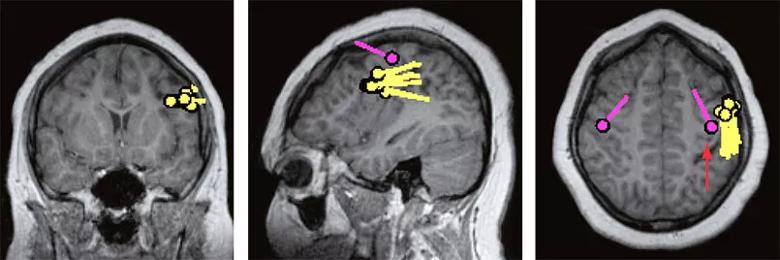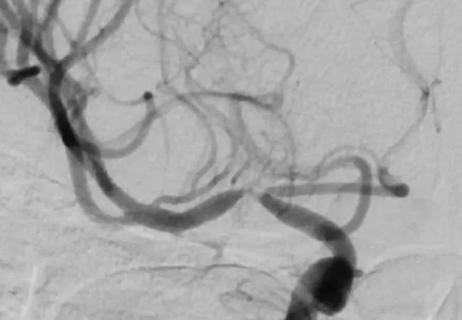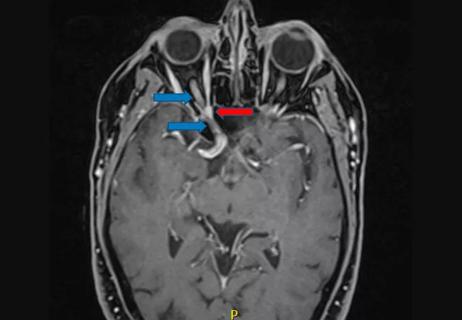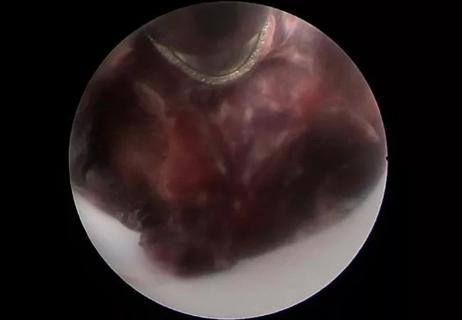Learnings from over 1,000 MEG studies at Cleveland Clinic to date

By Richard C. Burgess, MD, PhD, and Sumiya Shibata, MD, PhD
Cleveland Clinic is a non-profit academic medical center. Advertising on our site helps support our mission. We do not endorse non-Cleveland Clinic products or services. Policy
Since Cleveland Clinic launched its magnetoencephalography (MEG) lab in 2008, we have applied MEG in more than 1,000 patients for precise localization of epileptic seizures, accurate mapping of functional areas in the brain, and uncovering of interictal spikes that cannot be identified using scalp electroencephalography (EEG). In many patients these results have been of critical assistance in planning for surgery.
This post briefly discusses the unique clinical utility that MEG can bring to bear — particularly for pediatric patients with epilepsy — and illustrates that utility through two pediatric case vignettes.
For pediatric epilepsy patients being considered for a targeted surgical resection, MEG is a localization tool that can significantly impact surgical strategy. MEG provides a direct measurement of neuronal activity and can be used to accurately pinpoint the location (within 3-4 mm) of physiological interneuronal communication or aberrant discharges.
MEG measures the extremely weak magnetic fields generated by neuronal activation. It can identify the location and duration of the net synaptic transmissions of clusters of nerve cells. It provides localization information about both normal and abnormal brain function, enabling the creation of a functional map of the cortex. MEG can isolate the source of aberrant neuronal activity and determine the spatial relationship of eloquent cortex to nearby pathological regions, thus helping guide the evaluation and treatment of patients with epilepsy or brain tumors.
Since brain magnetic fields are several orders of magnitude weaker than ambient magnetic noise from the environment, the MEG scanner is housed in a magnetically shielded room. Its sensors consist of detection coils and their corresponding superconducting quantum interference devices (SQUIDs), which use superconductivity produced by temperatures very close to absolute zero to amplify the weak neuronal signals. Approximately 300 detection coils, housed in a dewar containing liquid helium, surround the patient’s head to provide a dense spatial sampling of the entire brain’s neuromagnetic activity.
Because the MEG recording is reference-free and the neuromagnetic signals are not attenuated by bone and scalp, MEG has a higher sensitivity and more precise localization capability for brain signals than does EEG. In addition, MEG’s temporal resolution is on the order of milliseconds. Using the high spatial and temporal resolution provided by MEG recording, the location, strength and orientation of the brain signal’s source can be accurately inferred using specialized computer processing based on mathematical modeling.
MEG’s value is underscored by the fact that approximately 30 clinical MEG centers are active in the U.S., and most commercial insurers now provide reimbursement for MEG scans.
MEG is an especially valuable tool in the evaluation of pediatric patients with epilepsy. A scan is safe, noninvasive and painless. MEG uses no ionizing radiation, generates no magnetic fields and requires no injections. The machinery is quiet and almost never produces a feeling of claustrophobia. MEG is usually performed on an outpatient basis, and parents may accompany children into the MEG testing room to calm and comfort them.
MEG confirmation of the epileptic focus and refinement of its location make it possible to identify patients with medically refractory epilepsy who may benefit from surgical resection. It is particularly helpful in MRI-negative patients, or when MRI has identified multiple lesions. In some cases MEG may allow epilepsy surgery to proceed without need for long-term intracranial EEG monitoring.
In addition, MEG’s ability to delineate the spatial relationship between the pathological region and nearby eloquent cortex helps guide the surgical trajectory. For example, the somatosensory evoked field (SEF) elicited by electrical stimulation of the median nerve is used to functionally map somatosensory cortex. SEF can precisely determine the central sulcus, even in cases where the primary somatosensory area has been altered by space-occupying lesions or moved by seizure disorders.
We conclude with the following illustrated case studies as examples of how we are increasingly using MEG findings at Cleveland Clinic to determine therapeutic management in a growing number of pediatric patients.
A 10-year-old girl with tuberous sclerosis complex and ADHD suffered from medically refractory epilepsy that involved weekly seizures. Video EEG evaluation suggested that the seizures arose from the right side of the brain. However, brain MRI showed multiple lesions in the left side and none in the right side. Fluorodeoxyglucose positron emission tomography (FDG PET) was nonlateralizing, exhibiting bilateral hypometabolism.
MEG showed interictal epileptiform discharges, all originating from a restricted location in the deep gray matter of the right middle frontal gyrus (Figure 1). Careful scrutiny of a repeat brain MRI in the region identified by MEG revealed a subtle, ill-defined hyperintensity extending centrally to the ventricle.

Figure 1. Video EEG evaluation of a 10-year-old girl with medically refractory epilepsy suggested that her seizures arose from the right side of the brain, but MRI showed multiple left-side lesions and none on the right, and FDG PET showed bilateral hypometabolism. MEG showed interictal epileptiform discharges from a restricted location in the deep gray matter of the right middle frontal gyrus. Repeat MRI in the region identified by MEG revealed a subtle hyperintensity extending centrally to the ventricle. A recording from intracranial electrodes guided by the MEG findings led to a limited resection of the epileptic focus, sparing motor function and eliminating the patient’s seizures.
Placement of intracranial electrodes was guided by the MEG and MRI findings. Based on the intracranial recording, it was possible to perform a limited resection of the epileptic focus, sparing motor function (Figure 1). Postoperatively, the patient had a mild hemiparesis on the left side that soon resolved with physical therapy. The surgery not only eliminated this young girl’s seizures but also profoundly affected her behavior. She has become calm and her verbal expression has improved. In this case, MEG was of crucial help in identifying the focal epileptogenic zone so the patient could undergo successful epilepsy surgery.
MEG has been established as a means for promptly re-examining structural imaging, as exemplified by the results of the repeat MRI in this case. We have also studied the prognostic value of coupling MEG results with postprocessing of the MRI scan and have found, as recently reported in Annals of Neurology, a remarkable improvement in outcome when the locations identified by MEG and voxel-based MRI morphometric analysis program (MAP) are concordant and are resected (100 percent seizure-free) vs. nonconcordant (only 39 percent seizure-free).
A 12-year-old boy presented with refractory complex motor seizures triggered by “surprise” tactile stimulation. Brain MRI showed encephalomalacia in the frontal lobes bilaterally as well as in the left parietal lobe due to perinatal hypoxia/ischemia. Video EEG evaluation suggested that the seizures arose from the left frontotemporal region.
The SEF response to right median nerve stimulation identified the central sulcus on the left side, and the spontaneous MEG recording showed a single cluster of interictal dipoles anterior to the central sulcus (Figure 2). The excellent temporal resolution of MEG enabled tracking of the epileptic discharges along a consistent propagation pathway from medial to lateral and from anterior to posterior. In this case, MEG provided high-resolution mapping of both normal brain function and the nearby epileptic focus. MEG’s role in surgical planning is especially important in patients whose epileptic focus is close to eloquent cortex.

Figure 2. MEG results of a 12-year-old boy with refractory complex motor seizures triggered by “surprise” tactile stimulation. Brain MRI showed encephalomalacia in the frontal lobes bilaterally and in the left parietal lobe. Video EEG suggested that seizures arose from the left frontotemporal region. In the MEG laboratory, SEF elicited by right median nerve stimulation determined the location of the left hemisphere primary somatosensory area (in pink), and the spontaneous MEG recording showed a cluster of interictal dipoles (in yellow) in the area anterior to the central sulcus (red arrow). The dipole sources shown are those at the origination of the epileptic discharges. MEG provided high-resolution mapping of both the normal brain function and the nearby epileptic focus.
Dr. Burgess is a staff physician in Cleveland Clinic’s Epilepsy Center and Department of Neurology.
Dr. Shibata is a research fellow in the Department of Neurology.

When specialized surgery makes sense for moyamoya syndrome

Multilevel cervical fusion restores function in an athletic 78-year-old

Case study underscores the imperative for thorough evaluation with SEEG

Schwannoma of the lacrimal nerve threatened right eye blindness

Case report demonstrates utility in a brain-injured patient

Partial resection plus radiation leads to good outcome from an unpredictable tumor

Diagnosis and treatment of rotational vertebrobasilar insufficiency syndrome

First reported case expands use of minimally invasive techniques